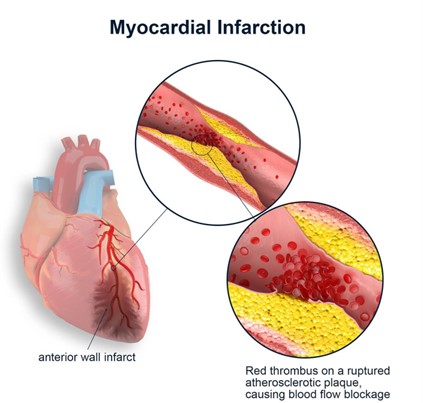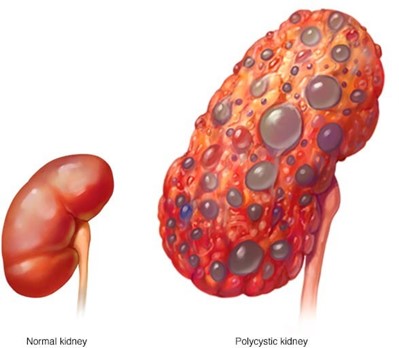The practical nurse (PN) is caring for a client with coronary artery disease who is admitted with intermittent chest pain. The admission laboratory results indicate elevations in troponin I and creatine phosphokinase myoglobin isoenzyme (CK-MB) levels. What should the PN consider the most significant risk for this client on the second day of admission?
The lab results indicate myocardial damage, and the client is at risk for cardiac dysrhythmias.
The client is at risk for pulmonary embolism, and lifestyle modifications need to be implemented.
The client is at risk for recurrent long-term angina pain and subsequent myocardial infarction (MI).
The lab results indicate risk factors for transient ischemic atack (TIA), and neurological vital signs should be monitored.
The Correct Answer is A
Troponin I and CK-MB are cardiac enzymes that are released into the bloodstream when the heart muscle is injured or necrotic. Elevated levels of these enzymes indicate that the client has suffered a myocardial infarction (MI) or heart attack. The damaged heart tissue can impair the electrical conduction system of the heart and cause abnormal heart rhythms or dysrhythmias, which can be life-threatening. The PN should monitor the client's cardiac status closely and report any changes to the charge nurse.
The other options are not correct because:
B. The client is not at risk for pulmonary embolism, which is a blockage of a pulmonary artery by a blood clot or other material. Pulmonary embolism does not cause elevated cardiac enzymes, but it can cause chest pain, shortness of breath, and hypoxia.

C. The client is not at risk for recurrent long-term angina pain, which is chest pain caused by reduced blood flow to the heart muscle due to narrowed or blocked coronary arteries. Angina pain does not cause elevated cardiac enzymes, but it can be a warning sign of an impending MI.
D. The lab results do not indicate risk factors for transient ischemic attack (TIA), which is a temporary interruption of blood flow to a part of the brain due to a clot or plaque. TIA does not cause elevated cardiac enzymes, but it can cause neurological symptoms such as weakness, numbness, or speech difficulties.
Nursing Test Bank
Naxlex Comprehensive Predictor Exams
Related Questions
Correct Answer is D
Explanation
The correct answer is choice D. Cleanse the finger with soap and water.
Choice A rationale:
Explaining the occurrence to the client is not the first action the PN should take in this situation. The priority is to address the potential exposure to bloodborne pathogens and ensure the PN's safety.
Choice B rationale:
Observing the appearance of the injection site is important for routine assessment but is not the first action the PN should take after getting stuck with the used needle. Immediate action to clean the wound site is essential to reduce the risk of infection.
Choice C rationale:
While notifying the charge nurse about the incident is important, it should not be the first action taken. The PN's safety should be addressed first by cleansing the finger.
Choice D rationale:
The PN should first cleanse the finger with soap and water immediately after getting stuck with the used needle. This action helps reduce the risk of infection and contamination. After cleansing, the PN can follow the facility's protocol for reporting incidents and seek necessary medical attention if required.
Correct Answer is D
Explanation
This is the best intervention for the PN to implement because it monitors the client's fluid status and helps detect fluid overload, which can cause hypertension and neurological changes. The PN should weigh the client at the same time, on the same scale, and with the same clothing every day.

A. Using a cushion when sitting is not a priority intervention for this client and may not address the BP or mental status issues.
B. Performing range of motion exercises is not a priority intervention for this client and may not address the BP or mental status issues.
C. Documenting abdominal girth is not a priority intervention for this client and may not be an accurate indicator of fluid status.
Whether you are a student looking to ace your exams or a practicing nurse seeking to enhance your expertise , our nursing education contents will empower you with the confidence and competence to make a difference in the lives of patients and become a respected leader in the healthcare field.
Visit Naxlex, invest in your future and unlock endless possibilities with our unparalleled nursing education contents today
Report Wrong Answer on the Current Question
Do you disagree with the answer? If yes, what is your expected answer? Explain.
Kindly be descriptive with the issue you are facing.
